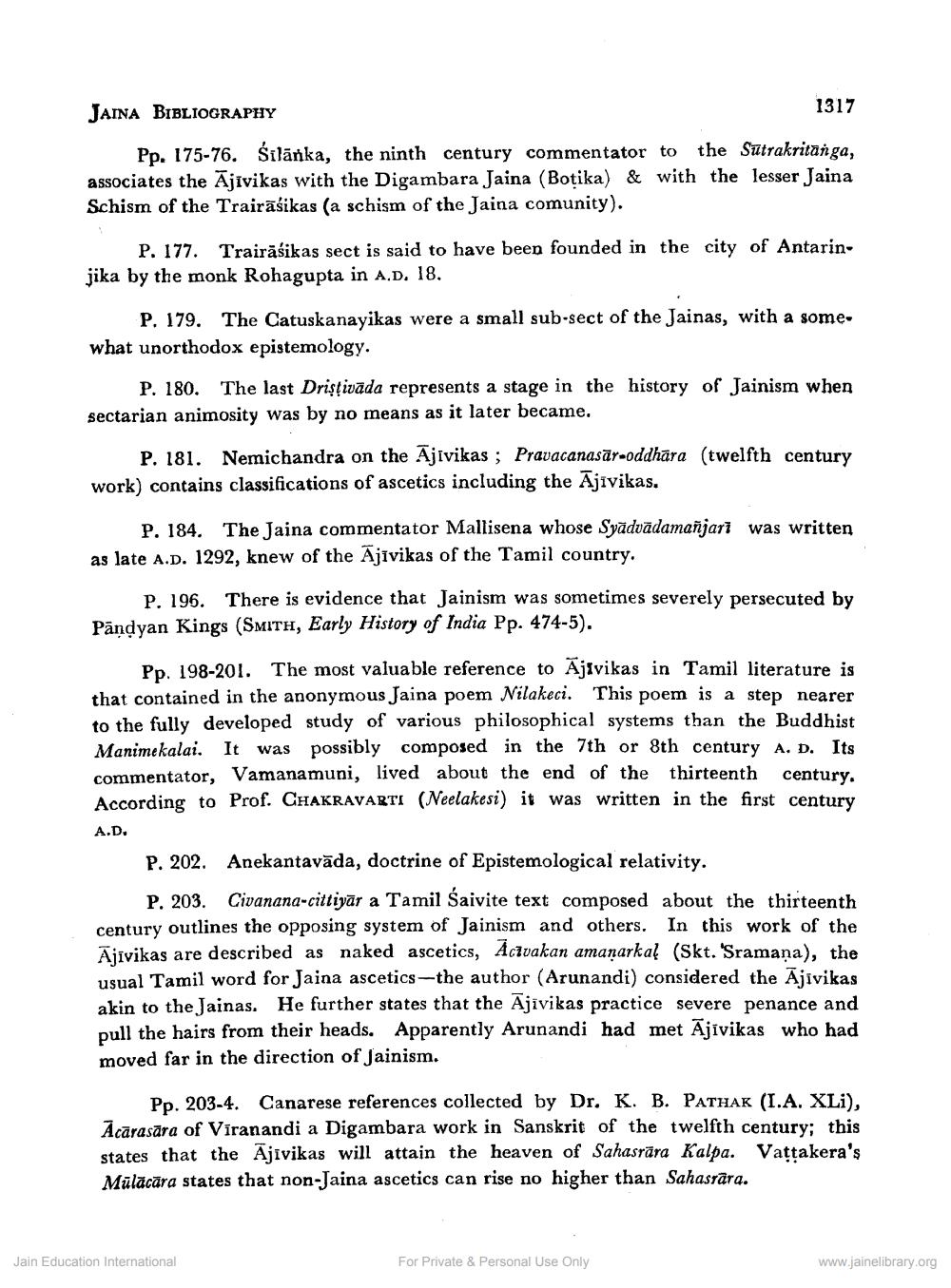________________
JAINA BIBLIOGRAPHY
Pp. 175-76. Śilanka, the ninth century commentator to the Sutrakritanga, associates the Ajtvikas with the Digambara Jaina (Botika) & with the lesser Jaina Schism of the Trairäsikas (a schism of the Jaina comunity).
P. 177. Trairāśikas sect is said to have been founded in the city of Antarinjika by the monk Rohagupta in A.D. 18.
1317
P. 179. The Catuskanayikas were a small sub-sect of the Jainas, with a some. what unorthodox epistemology.
P. 180. The last Dristicada represents a stage in the history of Jainism when sectarian animosity was by no means as it later became.
P. 181. Nemichandra on the Ajivikas; Pravacanasär-oddhara (twelfth century work) contains classifications of ascetics including the Ajivikas.
P. 184. The Jaina commentator Mallisena whose Syādvādamañjarī was written as late A.D. 1292, knew of the Ajtvikas of the Tamil country.
P. 196. There is evidence that Jainism was sometimes severely persecuted by Pandyan Kings (SMITH, Early History of India Pp. 474-5).
Pp. 198-201. The most valuable reference to Ajtvikas in Tamil literature is that contained in the anonymous Jaina poem Nilakeci. This poem is a step nearer to the fully developed study of various philosophical systems than the Buddhist Manimekalai. It was possibly composed in the 7th or 8th century A. D. Its commentator, Vamanamuni, lived about the end of the thirteenth century. According to Prof. CHAKRAVARTI (Neelakesi) it was written in the first century
A.D.
P. 202. Anekantavāda, doctrine of Epistemological relativity.
P. 203. Civanana-cittiyar a Tamil Šaivite text composed about the thirteenth century outlines the opposing system of Jainism and others. In this work of the Ajivikas are described as naked ascetics, Actvakan amaṇarkal (Skt. 'Sramaņa), the usual Tamil word for Jaina ascetics-the author (Arunandi) considered the Ajivikas akin to the Jainas. He further states that the Ajivikas practice severe penance and pull the hairs from their heads. Apparently Arunandi had met Ajtvikas who had moved far in the direction of Jainism.
Pp. 203-4. Canarese references collected by Dr. K. B. PATHAK (I.A. XLI), Acarasara of Viranandi a Digambara work in Sanskrit of the twelfth century; this states that the Ajivikas will attain the heaven of Sahasrara Kalpa. Vaṭṭakera's Malacara states that non-Jaina ascetics can rise no higher than Sahasrara.
Jain Education International
For Private & Personal Use Only
www.jainelibrary.org




